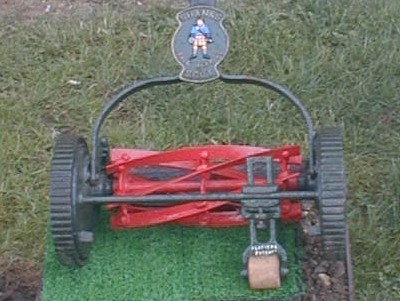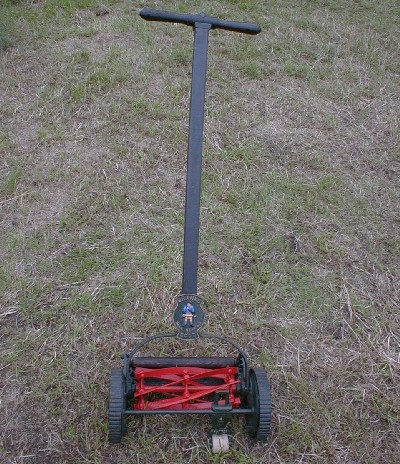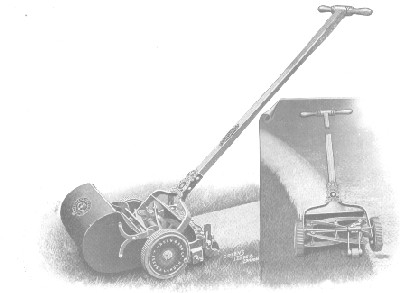MP045: Slatter's Front Runner

Slatter's Front Runner was an unusual but clever solution to a problem that is inherent to the sidewheel.
The biggest drawback of a conventional sidewheel mower is that it cannot cut right to the edge of the lawn. This is because the wheels are mounted outside the cutting cylinder (reel). Under normal use the mower leaves a narrow uncut strip under each wheel as it passes over the lawn. The operator simply overlaps each successive pass to make sure all of the grass is cut. But this is not possible at the lawn edge because the sidewheel would overhang the lawn and stop turning. This may stop the cutting cylinder from turning because it is driven directly from the sidewheel. More importantly the side of the mower at the lawn edge would not be supported and the bottom blade would drop and dig into the turf, preventing the mower from working and creating a scar on the lawn.

By fitting the Front Runner to the crossbar at the front of the mower the operator can use the sidewheel right up to the edge of the lawn. This is because the Front Runner's small wheel takes the place of the sidewheel that is overhanging the edge of the lawn and supports the weight of the mower. The other sidewheel continues to rotate the cutting cylinder so the mower can be used as normal.
The Front Runner can only be used where the edge of the lawn is higher than the adjacent flowerbed, border or pathway. It is not suitable for use when the lawn is bordered by a wall or edging that protrudes above the surface of the lawn because the sidewheel could not overhang the edge of the lawn in these cases. For these situations a different type of sidewheel mower with a modified chassis and a single, offset wheel were used.

Slatter's Front Runner was a novel solution to a common problem. It was offered for sale by most of the leading sidewheel manufacturers of the period and was priced 4s (four shillings) in 1910. It was available for a number of years at the beginning of the 20th century. Given the widespread advertising and usefulness of the gadget it is quite likely that many thousands were sold. However, they are very uncommon today and highly prized by collectors.
